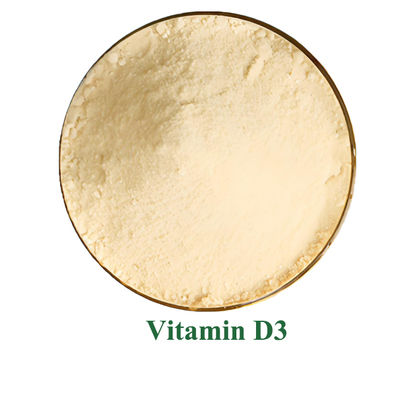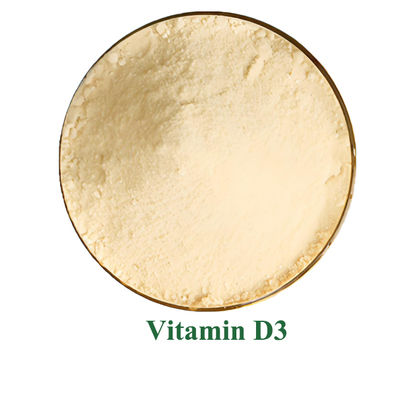-
Highlight
high purity plant Vitamin D3
,plant extract Vitamin D3 supplement
,pure Vitamin D3 CAS 67-97-0
-
Product NameVitamin D3
-
CAS67-97-0
-
Purity99.9%
-
AppearancePower
-
Shelf Life2 Years
-
MOQ5KG
-
PackingFoil Bag,Bottled,Drum,Carton,Container
-
QualityNatural Raw Materials, Safe And Harmless, No Addition
-
EINECS200-673-2
-
Place of OriginShaanxi, China
-
Brand NameBaisfu
-
CertificationVitamin D3
-
Model Number67-97-0
-
Minimum Order Quantity5kg
-
Price168.59USD
-
Packaging DetailsFoil bag,Bottled,Drum,Carton,Container
-
Delivery Time10-15 work days
-
Payment TermsT/T,Western Union,D/P,L/C
-
Supply Ability20,000 kilograms a month
Plant extract Vitamin D3, high purity. CAS: 67-97-0
Vitamin D₃ (chemical formula C₂₇H₄₄O), also known as cholecalciferol, is an important member of the fat-soluble vitamin family. It can be naturally synthesized through skin exposure to ultraviolet light and is also found in a few foods. Artificial synthesis technology is well-established. Its core functions are "regulating calcium and phosphorus metabolism and maintaining bone health," and it also possesses diverse activities such as immune regulation. It is widely used in food, daily chemical products, and other fields, and is an essential nutrient for the human body.
Chemical Composition: The core component is cholecalciferol (vitamin D₃). The chemical structure of natural and synthetic products is completely identical. Commercial products typically have a purity of ≥99% (food grade/pharmaceutical grade), and are often available in oil or powder (microencapsulated) forms to enhance stability and solubility.
Physical Properties: The pure product is a colorless needle-like crystal, odorless and tasteless; insoluble in water, readily soluble in ethanol, oils, and other organic solvents; melting point approximately 84-88℃; heat-stable (does not easily decompose under normal processing temperatures), but sensitive to light and oxygen, and easily oxidized and degraded.
Chemical Properties: Its fat-soluble nature necessitates absorption via fat. In the body, it undergoes hydroxylation in the liver and kidneys to convert to its active form (1,25-dihydroxyvitamin D₃) to exert its effects; it exhibits strong synergistic effects with minerals such as calcium and phosphorus, with no significant chemical incompatibility, and can stably exist in fat-soluble product systems.
| Product Name | Vitamin D3 |
| CAS | 67-97-0 |
| EINECS | 200-673-2 |
| Type | Food Flavors |
| Brand Name | BAISIFU |
| Appearance | Power |
| Shelf Life | 2 years |
| MOQ | 5KG |
| Origan | Shaanxi,China |
| Purity | 99% |
| Packing | Foil bag,Bottled,Drum,Carton,Container |
| Storage | Sealed in dry,Room Temperature |
-
Food Industry
Fortified Foods: Used in infant formula, children's growth milk, yogurt, cheese, breakfast cereals, sports foods, and senior citizen foods to enhance nutrient content and compensate for the deficiency of Vitamin D₃ in natural foods (naturally rich sources are extremely rare).
Specialty Foods: Used in foods specifically for pregnant women, vegetarians, and people in polar/low-light regions to specifically supplement Vitamin D₃ and prevent deficiency.
-
Daily Chemicals and Other Industries
Skincare Products: Added to face creams, lotions, and sunscreens to promote calcium metabolism in skin cells, enhance skin barrier function, help improve dry and sensitive skin, delay skin aging, and complement repairing and anti-aging skincare products.
Pet Food: Used in dry pet food and supplements to prevent rickets and osteoporosis in pets, maintain healthy bones and teeth, and is especially suitable for indoor pets that lack outdoor activity.
-
Key physiological functions, irreplaceable: As a core regulator of calcium and phosphorus metabolism, it promotes intestinal calcium absorption and maintains bone and teeth mineralization, making it an essential nutrient for preventing osteoporosis, rickets (in children), and osteomalacia (in adults). It also participates in immune cell development and regulation, playing a vital role in maintaining immunity and cardiovascular health.
-
Dual supply channels (natural and synthetic), stable supply: The human body can synthesize it endogenously through sunlight exposure and obtain it exogenously through food or supplements; artificial synthesis (using cholesterol from lanolin as a raw material) is a mature process with large-scale production and high purity, meeting the needs of large-scale applications and offering excellent cost-effectiveness.
-
Fat-soluble, easy to store, and highly tolerable: Its fat-soluble nature allows it to be stored in the liver and adipose tissue, eliminating the need for frequent daily supplementation; it is highly safe when used within the prescribed dosage, with no significant toxic side effects. Only long-term excessive intake (more than 50 μg per day) may lead to hypercalcemia; the risk for daily use is extremely low.
- Strong compliance and adaptability to multiple scenarios: It complies with the food fortification agent and health product raw material standards of most countries and regions around the world, such as GB 14880, FDA, and EFSA, and can be widely used in food, health products, medicine and other fields to meet the nutritional needs of the entire population.






Overall Rating
Rating Snapshot
The following is the distribution of all ratingsAll Reviews